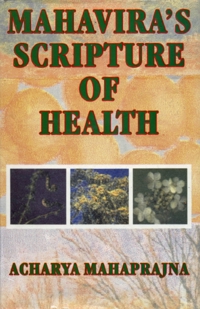
Leshyadhyana [Perception of Psychic Colours] and Svasthya [health]
Let us think about the colours, the emotions and the abhamandala in the context of the leshya. The leshya has the vargana or the pudgalas, having their own colours. Those colours influence our bhavadhara. One of the meanings of the leshya is colour. Its other meaning is the bhavadhara. The colour and the bhavadhara have very close and pervasive influence.
With the dominance of a particular colour, a person would feel a particular emotion and with a particular emotion, a particular colour would become dominant in him. As the colour, so the emotion and as the emotion, so the colour. In popular terms, it can be said that with the change of emotion in a particular person his colour changes.
These colours also influence the emotions of the person as well as the rays of the taijasa sharira. The energy flowing out of the body forms an electro-magnetic field which is related to the colours. Our body is the vidyut sharira from which emerge persistently the body-like forms. They combine with the rays which are like the colours. Our body is encircled by the colours from all sides, forming a lustrous halo. When the pictures of very great and eminent men are exhibited, they are shown with the bright circle around their heads. This circle is called bhamandal. There is an envelope of the rays round the body which is called abhamandal. The bhamandal is called the halo and the abhamandal is called the aura. The halo and the aura would be as the colours would be.
If a persons emotions are pure and sacred, his bhamandal and abhamandal become very powerful. If his emotions are impure, if he is always invaded by evil thoughts, if he is always prone to violence and evil acts, his abhamandal would become pallid, striking the tarnished.
 Acharya Mahaprajna
Acharya Mahaprajna

